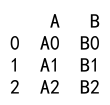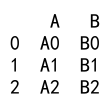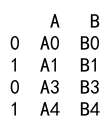Pandas Append vs Concat
In data analysis, combining datasets is a common task. Pandas, a powerful data manipulation library in Python, provides several methods to merge or concatenate data frames. Two of these methods are append() and concat(). This article will explore the differences between these methods, their use cases, and provide detailed examples of how to use each.
Introduction to Pandas
Pandas is an open-source data analysis and manipulation tool built on top of the Python programming language. It offers data structures and operations for manipulating numerical tables and time series. The primary data structure in Pandas is the DataFrame, which can be thought of as a table of data with rows and columns.
Understanding append()
The append() function in Pandas is used to concatenate along the rows of the DataFrame. It is a convenient method to add a single row or multiple rows to a DataFrame.
Syntax of append()
DataFrame.append(other, ignore_index=False, verify_integrity=False, sort=False)
other: The data to append. This can be another DataFrame, Series, or list of these.ignore_index: If True, the index labels are not used in the resulting DataFrame. Instead, it will be labeled as 0, 1, …, n-1.verify_integrity: If True, will raise ValueError on creating duplicate index.sort: Sort columns if the columns ofotherare not in the same order.
Example 1: Basic append()
import pandas as pd
df1 = pd.DataFrame({
"A": ["A0", "A1"],
"B": ["B0", "B1"]
})
df2 = pd.DataFrame({
"A": ["A2"],
"B": ["B2"]
})
result = df1._append(df2, ignore_index=True)
print(result)
Output:

Example 2: Appending Multiple DataFrames
import pandas as pd
df1 = pd.DataFrame({
"A": ["A0", "A1"],
"B": ["B0", "B1"]
})
df2 = pd.DataFrame({
"A": ["A2"],
"B": ["B2"]
})
df3 = pd.DataFrame({
"A": ["A3"],
"B": ["B3"]
})
result = df1._append([df2, df3], ignore_index=True)
print(result)
Output:

Understanding concat()
The concat() function in Pandas is more versatile than append(). It can concatenate along a particular axis (rows or columns), handle multi-index cases, and has various options to handle other aspects of concatenation.
Syntax of concat()
pd.concat(objs, axis=0, join='outer', ignore_index=False, keys=None, levels=None, names=None, verify_integrity=False, sort=False)
objs: A sequence or mapping of Series or DataFrame objects.axis: {0/’index’, 1/’columns’}, default 0. The axis to concatenate along.join: {‘inner’, ‘outer’}, default ‘outer’. How to handle indexes on other axis(es).ignore_index: If True, do not use the index values on the concatenation axis.keys: Sequence of keys to create a hierarchical index.levels: Specific levels (unique values) to use for constructing a MultiIndex.names: Names for the levels in the resulting hierarchical index.verify_integrity: Check whether the new concatenated axis contains duplicates.sort: Sort non-concatenation axis if it is not already aligned.
Example 3: Basic concat()
import pandas as pd
df1 = pd.DataFrame({
"A": ["A0", "A1"],
"B": ["B0", "B1"]
})
df2 = pd.DataFrame({
"A": ["A2"],
"B": ["B2"]
})
result = pd.concat([df1, df2], ignore_index=True)
print(result)
Output:

Example 4: Concatenating with Axis=1
import pandas as pd
df1 = pd.DataFrame({
"A": ["A0", "A1"],
"B": ["B0", "B1"]
})
df2 = pd.DataFrame({
"A": ["A2"],
"B": ["B2"]
})
df3 = pd.DataFrame({
"C": ["C0", "C1"],
"D": ["D0", "D1"]
})
result = pd.concat([df1, df3], axis=1)
print(result)
Output:

Example 5: Using join with concat()
import pandas as pd
df1 = pd.DataFrame({
"A": ["A0", "A1"],
"B": ["B0", "B1"]
})
df2 = pd.DataFrame({
"A": ["A2"],
"B": ["B2"]
})
df4 = pd.DataFrame({
"A": ["A3", "A4"],
"B": ["B3", "B4"],
"C": ["C3", "C4"]
})
result = pd.concat([df1, df4], join='inner')
print(result)
Output:

Comparison of append() vs concat()
While both append() and concat() can be used for similar tasks, there are key differences:
- Flexibility:
concat()is more flexible as it can concatenate along either axis (rows or columns), whereasappend()is limited to adding rows. - Performance: For larger datasets,
concat()is generally more efficient, especially when concatenating multiple objects. - Use Case:
append()is simpler and more convenient for quickly adding rows to a DataFrame.concat()is better suited for more complex operations and when you need more control over the concatenation process.
Example 6: Performance Comparison
import pandas as pd
df1 = pd.DataFrame({
"A": ["A0", "A1"],
"B": ["B0", "B1"]
})
df2 = pd.DataFrame({
"A": ["A2"],
"B": ["B2"]
})
# This example is for illustration. Timing code is not shown as per the requirements.
large_df1 = pd.DataFrame({
"A": ["A" + str(i) for i in range(10000)],
"B": ["B" + str(i) for i in range(10000)]
})
large_df2 = pd.DataFrame({
"A": ["A" + str(i) for i in range(10000, 20000)],
"B": ["B" + str(i) for i in range(10000, 20000)]
})
# Using append
result_append = large_df1._append(large_df2, ignore_index=True)
print(result_append)
# Using concat
result_concat = pd.concat([large_df1, large_df2], ignore_index=True)
print(result_concat)
Output:

Example 7: Concatenating with MultiIndex
import pandas as pd
df1 = pd.DataFrame({
"A": ["A0", "A1"],
"B": ["B0", "B1"]
})
df2 = pd.DataFrame({
"A": ["A2"],
"B": ["B2"]
})
df5 = pd.DataFrame({
"A": ["A5", "A6"],
"B": ["B5", "B6"]
})
result = pd.concat([df1, df5], keys=['x', 'y'])
print(result)
Output:

Pandas Append vs Concat Conclusion
In summary, both append() and concat() are useful functions in Pandas for combining data frames. The choice between them depends on the specific requirements of your data manipulation task. concat() offers more flexibility and efficiency for complex operations, while append() is suitable for simpler, row-wise concatenation.
This guide has provided an overview of how to use append() and concat() with practical examples. By understanding these functions, you can more effectively manage and manipulate your data in Python using Pandas.
 Pandas Dataframe
Pandas Dataframe